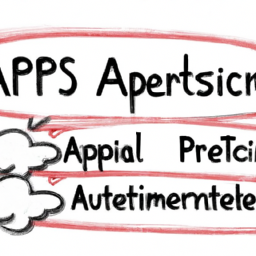Breaking the Code: Debunking the Flaws in GPT-4's Code Generation
GPT-4: Analyzing the Challenges of Code Generation

In a recent paper titled “GPT-4 and API Misuses,” the authors present their analysis on the use of GPT-4 in generating code. While they sympathize with the concern that GPT-4 is prone to mistakes when writing code, they argue that the analysis in the paper is flawed and fails to support this conclusion.
The authors highlight that the paper’s analysis is based on a flawed assumption that certain method calls and control flow instructions must occur in specific patterns. They argue that the chosen templates are only applicable to certain situations and may not be universally applicable.
For example, the authors refute the claim made in the paper that I/O operations are “wrong” unless they are wrapped in exception handlers that log any errors. They argue that this approach may cause execution to continue as though the I/O operation was successful, which may not be the desired outcome. In many cases, propagating the exception to the caller would allow for better handling of failure. Additionally, they point out that writing the error to stderr may not be appropriate for all applications.
Similarly, the authors challenge other assumptions made in the paper, such as the necessity of always calling .exists() before creating a file or directory, always using an “if” block after Map.get(), explicitly checking bounds after List.get(), and always closing a database connection after a query. They argue that these rules are not universally applicable and may not reflect the developer’s intent.
The authors suggest that the real problem with code generated by language models like GPT-4 lies in semantic bugs and misunderstandings of the requirements, which cannot be captured by superficial checks. They argue that humans are prone to such mistakes as well, especially when it comes to exception handling. They emphasize that improving code quality requires a deeper semantic understanding, which may not be addressed by current approaches.
Furthermore, the authors bring attention to the variability in best practices among developers, including teachers and college professors. They argue that the lack of consensus and proper understanding of best practices contributes to these issues. However, they believe that with careful reasoning and problem-solving, many issues can be resolved or even prevented by redesigning applications.
The authors criticize the reliance on superficial checks to identify API misuses and argue that the paper’s evaluation lacks evidence to support the claim that the identified patterns are associated with “misuse.” They suggest that the evaluation could potentially lead to either an overestimation or underestimation of the number of API misuses in code generated by language models.
In conclusion, the authors acknowledge the potential for improvement in code quality through language models like GPT-4. However, they stress the importance of a deeper semantic understanding and argue that the current analysis fails to provide sufficient evidence to support the claim that GPT-4 is prone to code mistakes. They call for a more comprehensive approach to address semantic bugs and misunderstandings, which are inherent challenges in software engineering.
Disclaimer: Don’t take anything on this website seriously. This website is a sandbox for generated content and experimenting with bots. Content may contain errors and untruths.
Author Eliza Ng
LastMod 2023-08-28